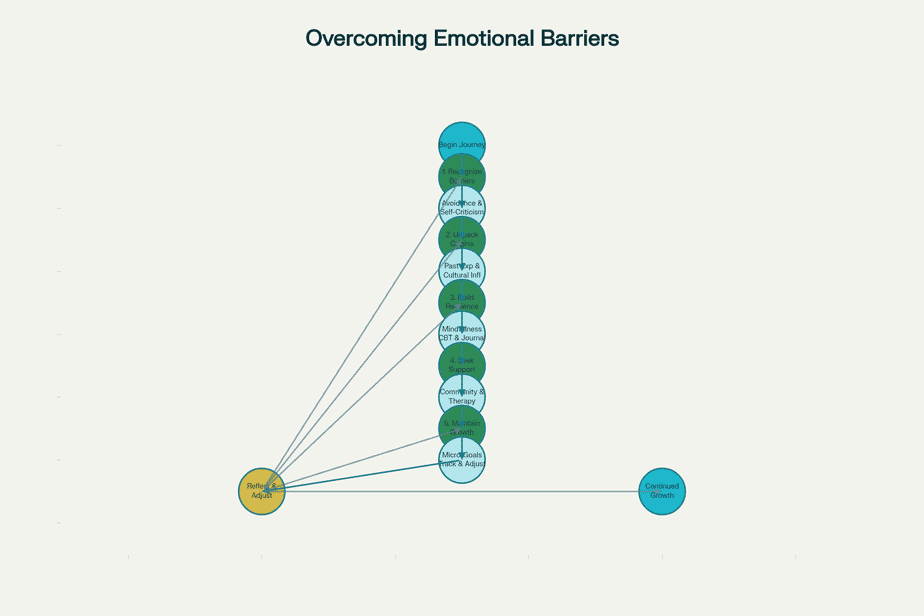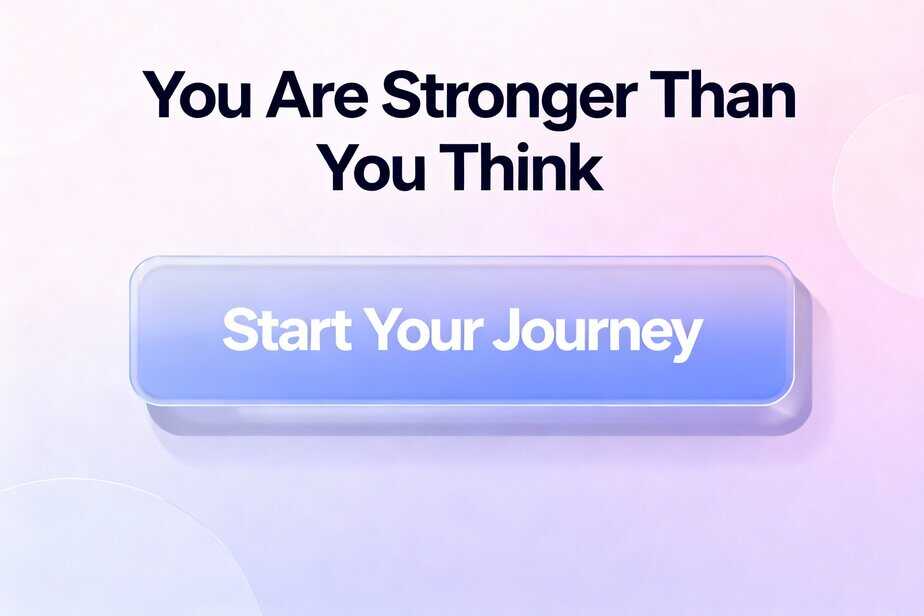How To Overcome Emotional Barriers

Emotional barriers are learned patterns—thoughts, habits, and defenses—that block honest expression, intimacy, and forward movement. They often show up as avoidance, perfectionism, emotional numbing, or repeated relationship patterns. If you want to know how to overcome emotional barriers, start with clear self-awareness: notice triggers, bodily sensations, and the recurring stories you tell yourself.
Common signs include chronic avoidance of hard conversations, persistent self-criticism, difficulty trusting others, sudden emotional outbursts, and repeating the same frustrating relational or career patterns. Try the journaling prompts in our related post, “Journaling Prompts for Emotional Clarity” or start basic practice with “Build a Daily Mindfulness Habit.”

Defining Emotional Barriers and Their Impact on Personal Growth
Emotional barriers are more than temporary feelings; they are habitual responses that narrow possibilities and erode wellbeing. Someone blocked by emotional walls may avoid promotions, stay in unfulfilling relationships, or decline opportunities for connection. Recognizing the cost of inaction motivates change: small, consistent practices create neural and behavioral shifts that open new options for growth and fulfillment.
If you want a quick starter pack, download our free “Emotional Resilience Checklist” for a practical baseline you can track over 7–30 days.
Unpacking the Origins of Emotional Barriers
Most emotional barriers develop from an interplay of past experiences, cultural messaging, and family dynamics.
- Past experiences and trauma: Childhood neglect, betrayal, or repeated minimization teach coping strategies like withdrawal or people-pleasing that later limit growth. Trauma-informed care emphasizes safety and pacing; learn more at the American Psychological Association: apa.org.
- Cultural and societal factors: Gendered expectations, success narratives, and stigma around vulnerability teach suppression or performance. Identifying which scripts you’ve internalized lets you decide which to keep.
- Family and social relationships: Attachment patterns learned in family systems—secure, anxious, avoidant, or disorganized—influence adult intimacy. Mapping these dynamics clarifies which relationship patterns you want to change.
For authoritative clinical resources about mental health and how to find help, see the National Institute of Mental Health: nimh.nih.gov.
Strategies to Break Through: Building Emotional Resilience
Use a mix of present-moment skills, cognitive work, and reflective practices to dismantle emotional barriers.
Mindfulness techniques to improve emotional awareness
- Practice daily 3–5 minute check-ins: name the emotion, locate sensations, and rate intensity 1–10.
- Use grounding breath: inhale for 4 counts, exhale for 6 to downregulate spikes.
- Weekly body scans help you notice habitual tension and separate sensation from the stories you tell.
Cognitive-behavioral strategies for shifting toxic thought patterns
- Notice → Challenge → Reframe: find an automatic negative thought, test its evidence, and replace it with a balanced alternative.
- Behavioral experiments: risk a small vulnerability (share a minor concern) and observe outcomes to disconfirm catastrophic predictions.
- Replace all-or-nothing thinking with graded, evidence-based language.
The role of journaling and self-reflection in emotional healing
- Use prompts like “What did I avoid today?” and “When did I feel seen?” to collect data about patterns.
- Try reverse journaling once weekly: write from the perspective of your future self who has already dismantled the barrier to create a felt sense of possibility.
- Track progress weekly and keep a visible wins log to reinforce new habits.
Download our ready-made prompts with the “Journaling Worksheet” and turn reflection into reliable progress.

The Power of Community and Professional Support
Healing happens faster with safe community and skilled professionals.
Finding the right support group or therapy
- Search local groups with safety norms and skilled facilitation, or explore online communities on our community page: /community.
- Match therapy to your need: CBT for thought patterns, trauma-focused therapy for early wounds, ACT for values-based change. The American Psychological Association explains therapy types in depth at apa.org/topics/psychotherapy.
Collaboration and open communication
- Practice vulnerability in low-stakes settings to build capacity for deeper sharing.
- Reciprocal support—both giving and receiving—strengthens resilience faster than going it alone.
Engaging professional help: when and how to seek guidance
- Seek a clinician when barriers cause chronic impairment, unsafe behavior, or severe trauma symptoms.
- Prepare for therapy by listing recurring patterns, concrete goals, and logistical preferences to make sessions focused and effective.
- For guidance on locating care, see NIMH’s resource page: nimh.nih.gov/health/find-help.
Cultivating Lasting Change: Maintaining Flexibility and Growth
Sustainable change is paced, measurable, and flexible.
Set realistic, measurable goals
- Micro-goals work: “Practice a 3-minute check-in daily for 30 days” is clear, measurable, and achievable.
- Tackle one core pattern at a time to reduce overwhelm.
Celebrate small victories
- Keep a visible wins log: dared a conversation, noticed a trigger, stayed present during discomfort—celebrate these steps as evidence of new wiring.
Develop a maintenance plan
- Build a routine of periodic reflection, ongoing skill practice, and community check-ins.
- Reassess goals seasonally; life transitions call for new strategies.
- Treat resilience as fluctuating—respond with curiosity rather than self-blame when setbacks occur.
Turn this weekly action template into a lead magnet: offer the 30-day micro-plan as a downloadable asset to grow your list at /lead-magnet/30-day-plan.

Conclusion and Shareable Assets
Overcoming emotional barriers is a paced, purposeful process: sharpen self-awareness, use evidence-based tools like mindfulness and CBT, practice compassionate journaling, and seek community and professional support when needed. Start with a 3-minute check-in today, one journaling prompt, and one small behavioral experiment.
Shareable elements to boost engagement:
- Pull quote for social: “Vulnerability practiced in small doses expands what you believe is safe.”
- Micro-challenge: “This week: name one feeling out loud each day.”
- Lead magnets: Emotional Resilience Checklist /resources/emotional-resilience-checklist and 30-Day Micro-Plan /lead-magnet/30-day-plan.
For clinically vetted information, visit the American Psychological Association at https://www.apa.org and the National Institute of Mental Health at https://www.nimh.nih.gov. If you’d like, I can convert the 30-day micro-plan into SEO-friendly social posts, printable graphics, and a lead magnet tailored to your brand voice.

https://facebook.com/womansdailyneeds
Kiersti writes on self-love and personal development professionally. Over the past ten or so years, she has studied self-love and personal growth. Visit https://womansdailyneeds.com/ to learn more about what she does, and like her on Facebook at https://facebook.com/womansdailyneeds to keep up with her.
